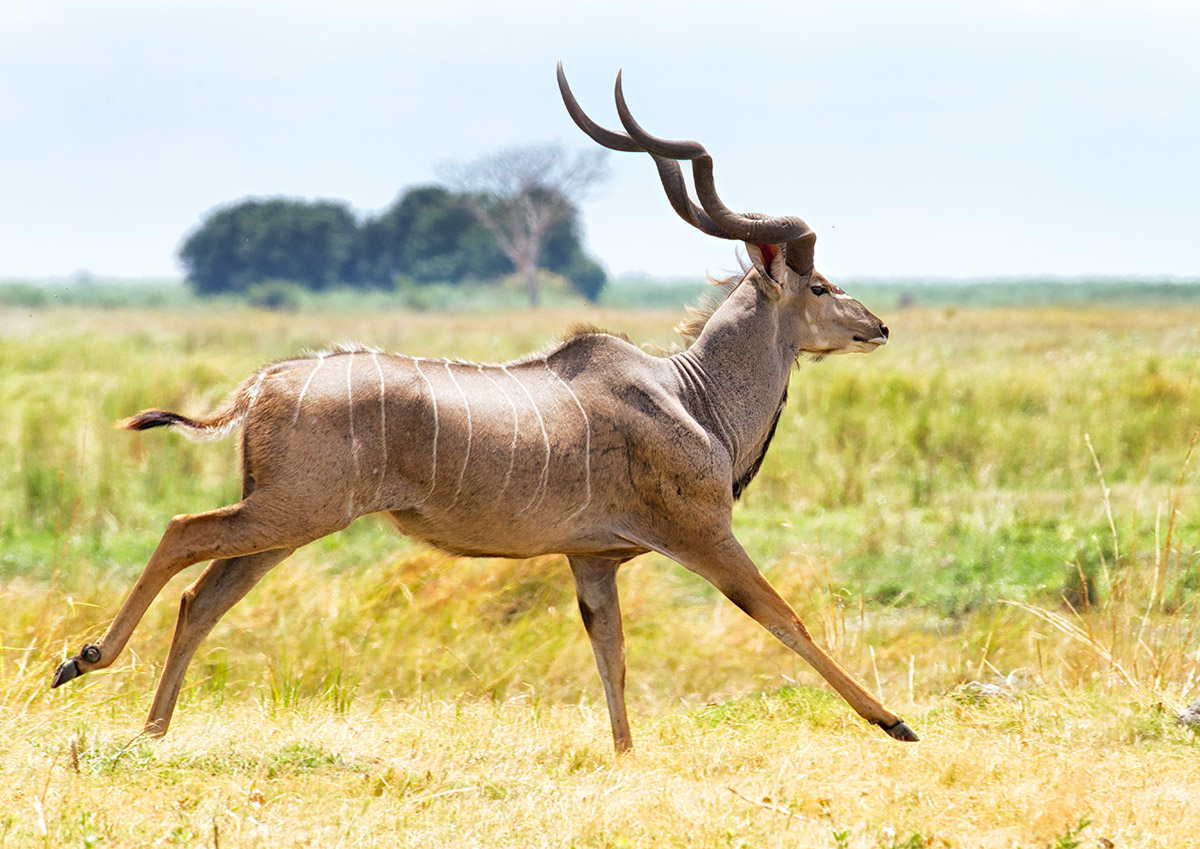Greater kudu (Tragelaphus strepsiceros)
Linyanti Airstrip, Chobe, Botswana
This is a woodland antelope found throughout eastern and southern Africa.
Despite occupying such widespread territory, they are sparsely populated in most areas, due to a declining habitat, deforestation and poaching.
The greater kudu is one of two species commonly known as kudu, the other being the lesser kudu, Tragelaphus imberbis.
Greater kudus have a narrow body with long legs, and their coats can range from brown/bluish-grey to reddish-brown.
They possess between 4–12 vertical white stripes along their torso.
The head tends to be darker in colour than the rest of the body, and exhibits a small white chevron which runs between the eyes.
Male greater kudus tend to be much larger than the females, and vocalize much more, utilizing low grunts, clucks, humming, and gasping.
The males also have large manes running along their throats, and large horns with two and a half twists, which, were they to be straightened, would reach an average length of 120 cm (47 in), with the record being 187.6 cm (73.9 in).
The horns do not begin to grow until the male is between the age of 6–12 months, twisting once at around 2 years of age, and not reaching the full two and a half twists until they are 6 years old; occasionally they may even have 3 full turns.
Reference: Wikipedia
1/1250s f/9.0 at 400.0mm iso500 hide exif
| Full EXIF Info | |
| Date/Time | 07-Nov-2013 13:28:01 |
| Make | Nikon |
| Model | NIKON D800E |
| Flash Used | No |
| Focal Length | 400 mm |
| Exposure Time | 1/1250 sec |
| Aperture | f/9 |
| ISO Equivalent | 500 |
| Exposure Bias | |
| White Balance | |
| Metering Mode | |
| JPEG Quality | |
| Exposure Program | |
| Focus Distance | 28.180 m |
Copyright © 2022 Dick Keely All Rights Reserved
